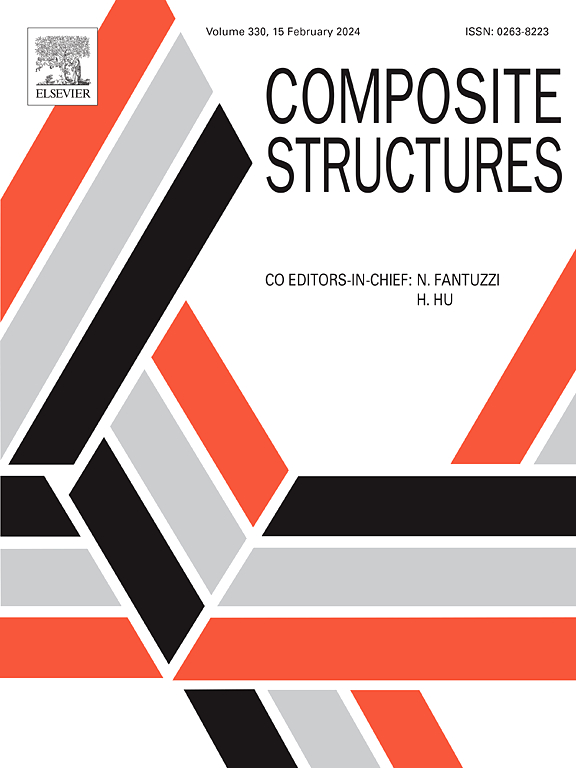Effect of symmetric interleaved/microarray structure films on flexural properties and fracture toughness of carbon fiber reinforced polymer
IF 6.3
2区 材料科学
Q1 MATERIALS SCIENCE, COMPOSITES
引用次数: 0
Abstract
Carbon fiber-reinforced polymer (CFRP) composites have attracted much attention due to their exceptional properties, but research into effective toughening strategies remain limited. In this study, polyethersulfone (PES), carbon nanotubes (CNTs), and carbon black (CB) were employed as toughening materials. The effects of varying mixing ratios, symmetric interleaved films, and microstructured films were evaluated using three-point bending, mode I, and mode II interlayer fracture toughness tests. Scanning electron microscopy (SEM) provided insights into the toughening mechanisms of PES/CNTs/CB films, particularly in relation to their symmetric interleaved and microarray structures. The results showed that optimizing the CNT-to-CB ratio to 3:2 significantly enhanced the in-plane flexural properties and mode II interlaminar fracture toughness of CFRP. Symmetric interleaved films (SI(34)) increased mode II fracture toughness by 242.51%, while films with a synergistic microarray structure (SI(34)/M) achieved an even greater improvement of 262.79%. Mode I fracture toughness was also notably enhanced. These findings contribute to the advancement of interlayer toughening technology, highlighting its potential applications in aerospace, automotive, and electronics industries.
求助全文
约1分钟内获得全文
求助全文
来源期刊

Composite Structures
工程技术-材料科学:复合
CiteScore
12.00
自引率
12.70%
发文量
1246
审稿时长
78 days
期刊介绍:
The past few decades have seen outstanding advances in the use of composite materials in structural applications. There can be little doubt that, within engineering circles, composites have revolutionised traditional design concepts and made possible an unparalleled range of new and exciting possibilities as viable materials for construction. Composite Structures, an International Journal, disseminates knowledge between users, manufacturers, designers and researchers involved in structures or structural components manufactured using composite materials.
The journal publishes papers which contribute to knowledge in the use of composite materials in engineering structures. Papers deal with design, research and development studies, experimental investigations, theoretical analysis and fabrication techniques relevant to the application of composites in load-bearing components for assemblies, ranging from individual components such as plates and shells to complete composite structures.
 求助内容:
求助内容: 应助结果提醒方式:
应助结果提醒方式:


